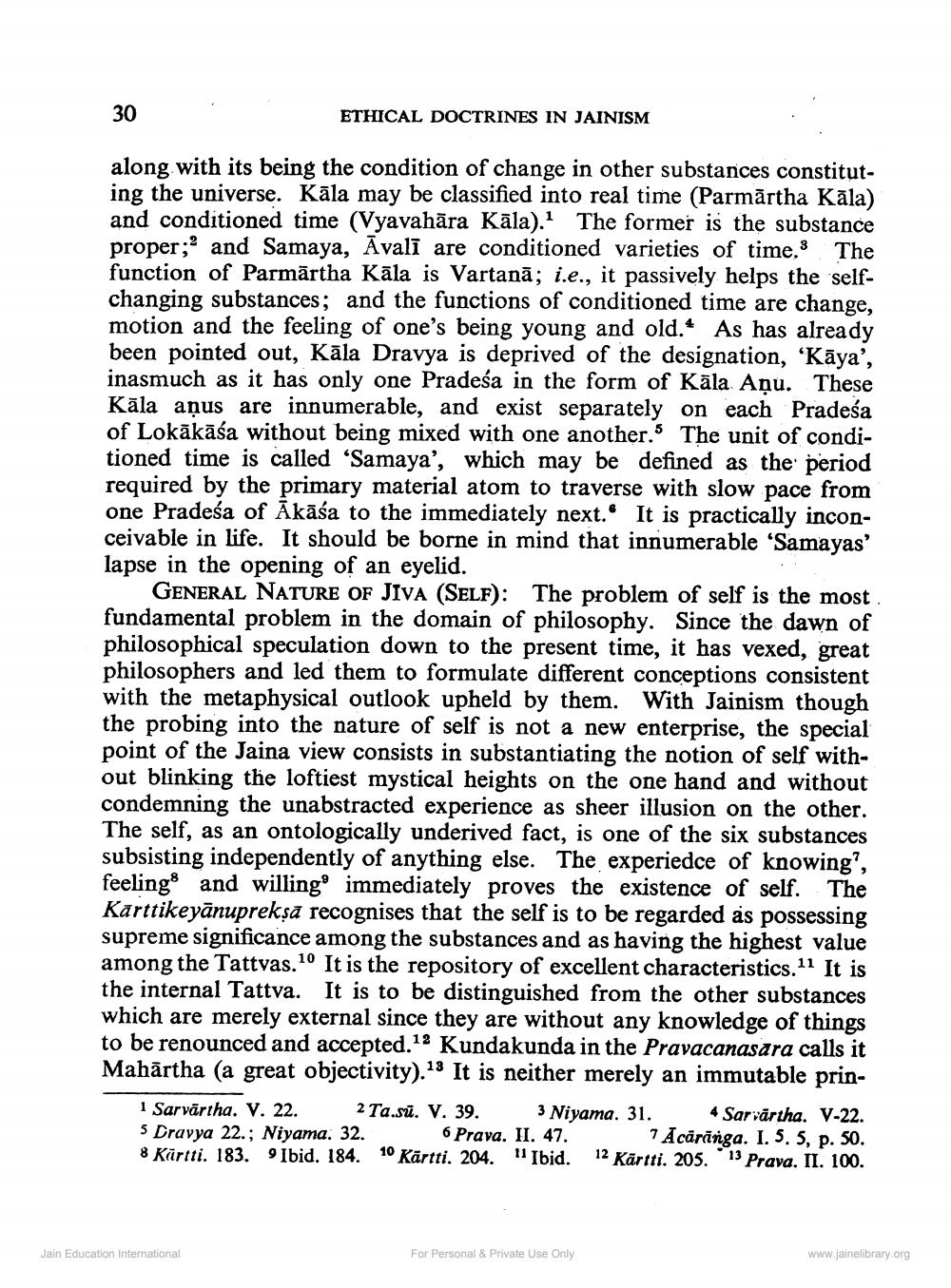________________
30
.
ETHICAL DOCTRINES IN JAINISM
along with its being the condition of change in other substances constituting the universe. Kāla may be classified into real time (Parmārtha Kāla) and conditioned time (Vyavahāra Kāla). The former is the substance proper;2 and Samaya, Avalī are conditioned varieties of time. The function of Parmārtha Kāla is Vartanā; i.e., it passively helps the selfchanging substances; and the functions of conditioned time are change, motion and the feeling of one's being young and old.* As has already been pointed out, Kāla Dravya is deprived of the designation, 'Kāya', inasmuch as it has only one Pradeśa in the form of Kāla Aņu. These Kāla aņus are innumerable, and exist separately on each Pradeśa of Lokākāśa without being mixed with one another. The unit of conditioned time is called 'Samaya', which may be defined as the period required by the primary material atom to traverse with slow pace from one Pradeśa of Ākāśa to the immediately next. It is practically inconceivable in life. It should be borne in mind that innumerable 'S lapse in the opening of an eyelid.
GENERAL NATURE OF JIVA (SELF): The problem of self is the most. fundamental problem in the domain of philosophy. Since the dawn of philosophical speculation down to the present time, it has vexed, great philosophers and led them to formulate different conceptions consistent with the metaphysical outlook upheld by them. With Jainism though the probing into the nature of self is not a new enterprise, the special point of the Jaina view consists in substantiating the notion of self without blinking the loftiest mystical heights on the one hand and without condemning the unabstracted experience as sheer illusion on the other. The self, as an ontologically underived fact, is one of the six substances subsisting independently of anything else. The experiedce of knowing?, feeling and willinge immediately proves the existence of self. The Karttikeyānuprekşā recognises that the self is to be regarded as possessing supreme significance among the substances and as having the highest value among the Tattvas. 10 It is the repository of excellent characteristics. 11 It is the internal Tattva. It is to be distinguished from the other substances which are merely external since they are without any knowledge of things to be renounced and accepted. 12 Kundakunda in the Pravacanasara calls it Mahārtha (a great objectivity).18 It is neither merely an immutable prin
1 Sarvärtha. V. 22. 2 Ta.sū. V. 39. 3 Niyama. 31. Sarvärtha. V-22. 5 Dravya 22.; Niyama. 32. Prava. II. 47. Ācārānga. I. 5.5, p. 50. 8 Kürtti. 183. 9 Ibid. 184. 10 Kārtti. 204. 11 Ibid. 12 Kārtti. 205. 13 Prava. II. 100.
Jain Education International
For Personal & Private Use Only
www.jainelibrary.org




